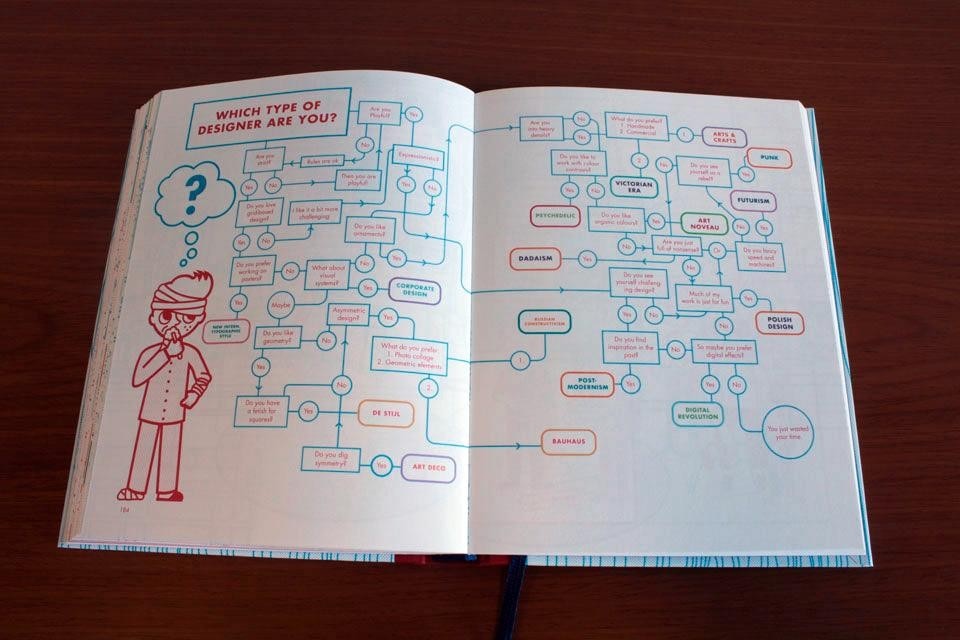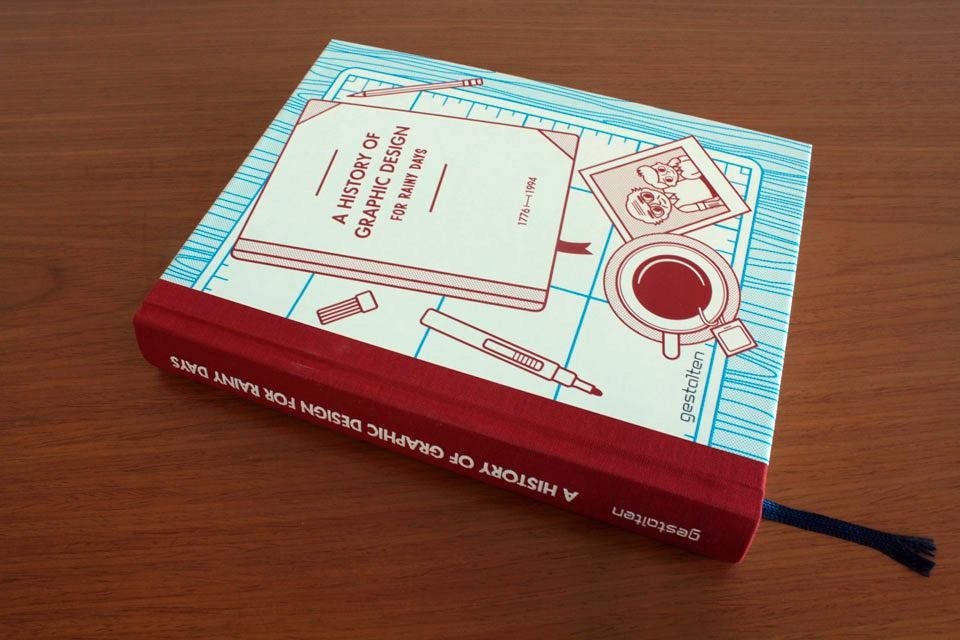Will we really study the history of graphic design on a rainy day? Maybe. There's something for everyone to learn in these pages, and at least the weather forces us to stay inside and read.
The narrative flows. The scanning of names, events and trends is rigorous and the space dedicated to each of these aspects finds the right balance, avoiding markedly extravagant choices but also the excess of predictability. And the mix of the basics and the pleasurable gathering of some extra information works; not much more than Wikipedia — which the authors acknowledge openly, being honest even before they are ironic —, but easily accessible in a single volume.
Attention to different disciplines is also well-balanced, albeit with an eye too keen on posters and type design, and a less vibrant interest in areas such as editorial design.
Another merit of this particular history of graphic design is that history is seen in a technical key. Every stylistic and linguistic evolution bears a close relationship with the technological knowledge of the time With its insistence on the steam engine, daguerreotypes and bitmaps, A History of Graphic Design for Rainy Days helps us remember.
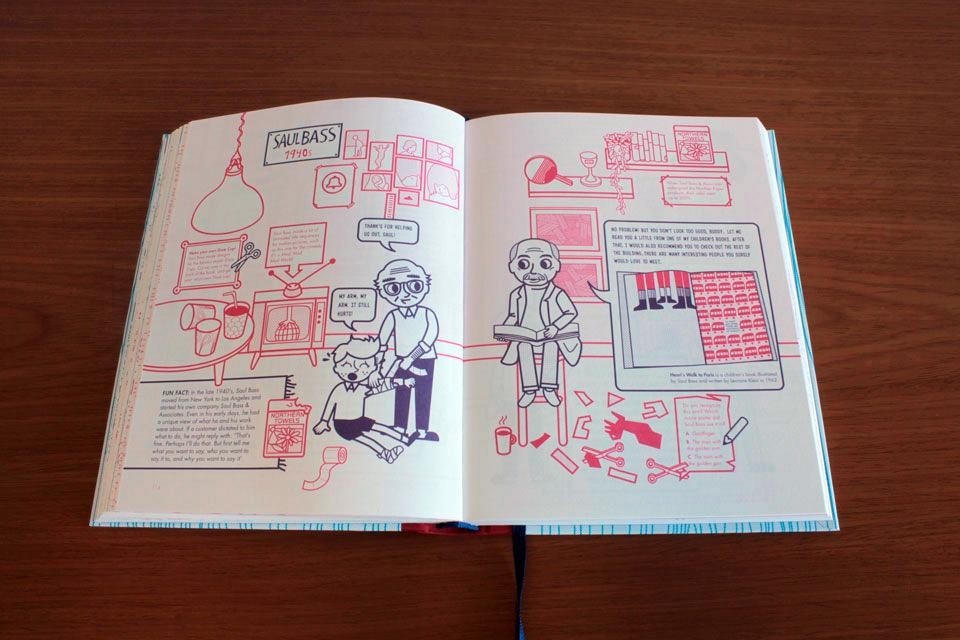
The two main characters, a boy with a lazy curiosity and his aged designer grandfather, embark on a journey through time: from the birth of industrial capitalism to Art Nouveau, from Johannes Itten's color theory, to psychedelia, postmodernism and the present day.
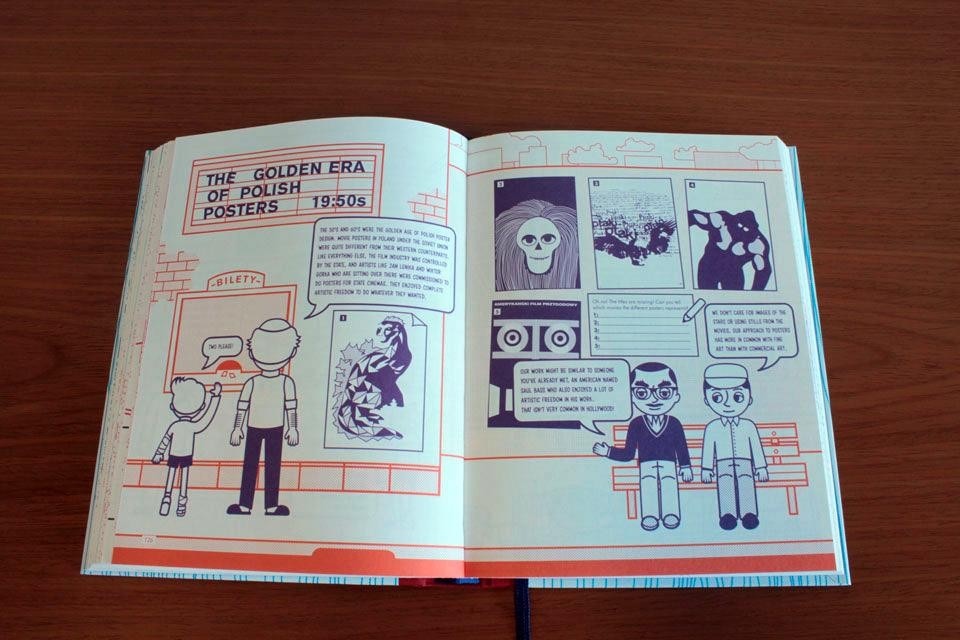
The idea is that historical periods and designers are associated with puzzles: "find the [typographical] mistake", solve a basic crossword puzzle, complete sketchy pictographs. Where a classic handbook would provide information, we sometimes find a quiz; the answer cannot be found in the book's pages but on the associated website.
If it is an exercise in style, it is only partly successful. But this is not a grave sin. The book will surely make a good gift, and those who receive it will read it with pleasure
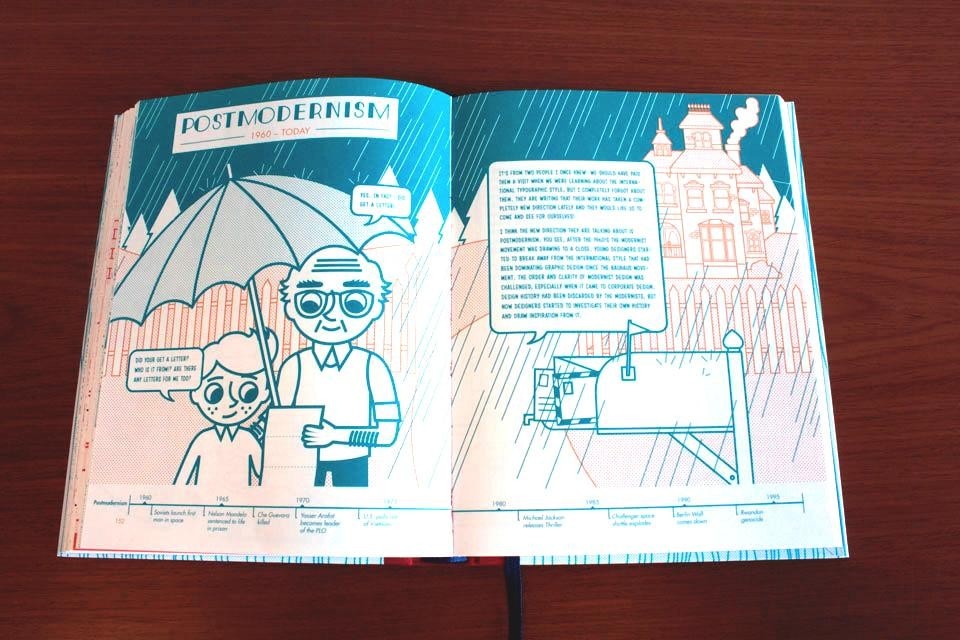
The final pages reinforce the message; they are made of shapes to cut out, reassemble and paste. But how many people will approach this ever-so-charming book with scissors in hand?
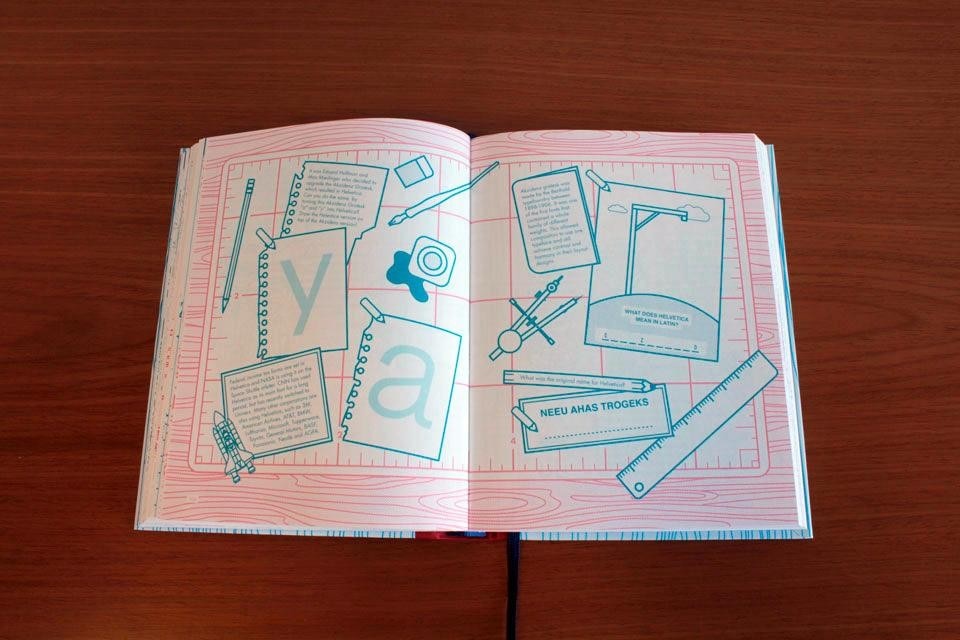
A History of Graphic Design for Rainy Days was written and designed by Studio 3, a creative agency from Oslo, formed by students from the Westerdals School of Communication. In 2010, they had already published the distinctly educational Hyperactivitypography from A to Z, aimed more clearly at a younger audience.
